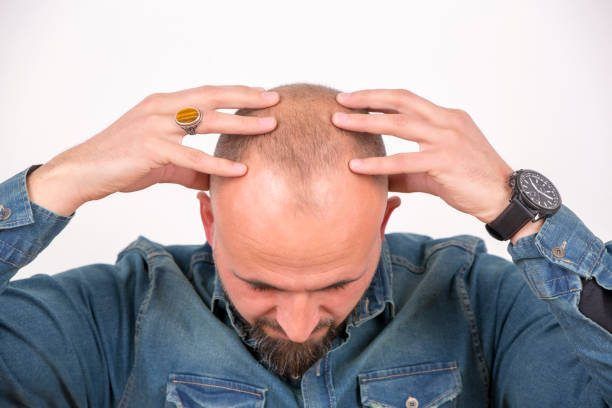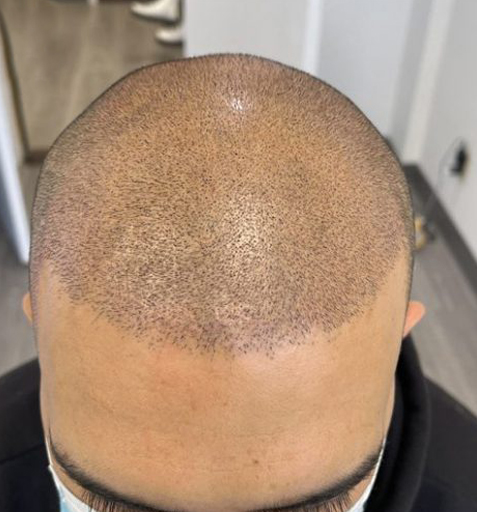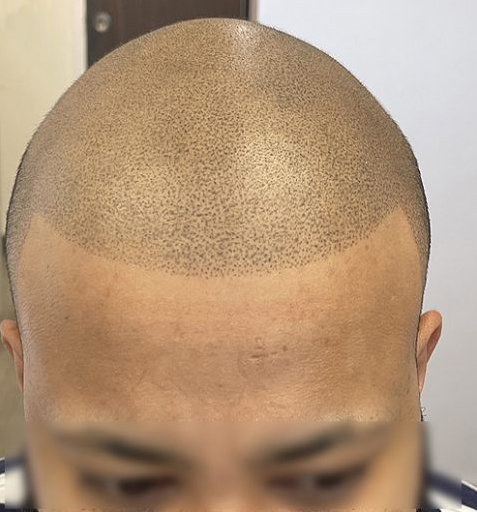
Table of Contents
Hair loss affects many people. It often leads to a drop in confidence. You may feel uncomfortable about your appearance as hair thins or falls out. Hair loss can make you self-conscious, especially in a city like Toronto. The way you look often shapes how you feel. Many effective hair restoration treatments are available. These treatments help you regain both your hair and your confidence. They provide natural results that can make you feel like yourself again.
Toronto offers a variety of hair restoration options. You can choose from both non-surgical and surgical treatments. Each option targets different types of hair loss and has unique benefits. You can find a treatment that fits your needs and lifestyle. This guide helps you understand the best options for restoring your hair. It will help you choose the right path for your hair restoration journey.
Table of Contents
Hair loss can occur for many reasons, with genetics being a significant factor. Male and female pattern baldness, often inherited through family lines, is one of the most common forms. In addition to genetics, stress can weaken hair follicles and lead to shedding. Health conditions such as thyroid imbalances and autoimmune diseases are also known to contribute to hair thinning. Poor nutrition plays a role, too, as a lack of essential nutrients can result in weak and unhealthy hair. A weak or damaged scalp may prevent healthy hair growth. Understanding the various hair loss causes is essential in determining the best treatment options to support hair regrowth.
Toronto offers a wide range of treatments for hair restoration. Both non-surgical and surgical options are available.
Minoxidil is an over-the-counter medication. It promotes hair growth by stimulating hair follicles. Minoxidil improves blood circulation in the scalp. This helps deliver more nutrients to hair follicles. Minoxidil works for both men and women. Its effectiveness is often seen in the early stages of hair loss.
Finasteride is another common medication for hair loss. It blocks dihydrotestosterone (DHT), a hormone responsible for shrinking hair follicles. DHT causes male and female pattern baldness. Reducing DHT levels can prevent further hair loss and promote new hair growth. Finasteride is recommended for men and should be used under a doctor’s supervision.
PRP therapy is a non-surgical treatment. It uses your own blood to restore hair growth. The process begins with a blood draw. The plasma is then separated and concentrated. Plasma contains growth factors that stimulate hair follicles. It is injected into areas where hair thinning or loss has occurred. PRP therapy rejuvenates hair follicles and encourages the growth of healthier hair. Many patients see noticeable results after a few sessions.
PRP therapy uses your own biological material. This reduces the risk of side effects. It is a great option for those who prefer non-invasive treatment. PRP therapy is most effective for people with early to moderate hair loss. It is often used with other treatments to enhance results.
LLLT uses low-level lasers to stimulate hair growth. The therapy emits light energy that penetrates the scalp. This improves blood flow and enhances follicle health. LLLT stimulates cells in the hair follicles, promoting new growth. It is effective for both men and women, especially during the early stages of hair loss.
LLLT is convenient and safe. It is painless and requires no downtime. You can perform it at home or in a clinic. Many people use LLLT as part of their hair restoration routine. Regular use helps maintain healthy hair and prevent further thinning.
FUE is a popular hair transplant method. It involves harvesting individual hair follicles from healthy areas. These follicles are then transplanted into thinning or bald spots. FUE creates natural-looking results. The procedure leaves minimal scarring, and the transplanted hair blends with existing hair. FUE works well for smaller areas of hair loss.
The procedure is done under local anesthesia. This ensures minimal discomfort during the process. FUE requires a short recovery period. The results are permanent, as transplanted follicles resist hair loss hormones.
FUT is a traditional hair transplant method. A strip of scalp is removed from the back of the head. Hair follicles are extracted from this strip and transplanted to thinning areas. FUT is ideal for individuals with significant hair loss. It allows the transplantation of a large number of follicles in one session.
FUT offers more dramatic results than FUE. However, it involves a longer recovery time and a slight risk of scarring. The donor area is stitched after the strip is removed, which can leave a linear scar. FUT is suitable for individuals who want a more substantial hair restoration.
Hair restoration can improve your self-esteem. As hair grows back and thickens, confidence increases. Hair loss often causes self-consciousness, especially in social and professional settings. Restoring hair can help regain a youthful appearance. This enhances confidence and emotional well-being.
Modern treatments provide natural-looking results. Techniques like FUE, FUT, PRP, and LLLT ensure the hair blends seamlessly with existing hair. The results look realistic and difficult to detect. Both non-surgical and surgical treatments aim to create an authentic look.
Hair restoration treatments offer long-lasting results. Surgical treatments like FUE and FUT provide permanent solutions. Transplanted follicles resist hormones that cause hair loss. Non-surgical treatments require periodic maintenance. However, they also provide long-term improvements in hair density and health.
Non-surgical treatments are highly convenient. Procedures like Minoxidil, Finasteride, PRP therapy, and LLLT require minimal downtime. You can resume daily activities immediately after most non-surgical treatments. These treatments fit into busy schedules, making them ideal for those with demanding lifestyles.
Finding the right clinic is essential for effective hair restoration. Look for experienced professionals with a proven track record. Patient reviews can give you insight into the clinic’s results and overall satisfaction. A trusted Hair Tattoo clinic uses advanced techniques and provides personalized consultations to evaluate your hair loss and recommend the best treatment for your needs.
The cost of hair restoration varies in Toronto. Non-surgical treatments like PRP therapy and LLLT start at about $500 per session. Surgical treatments like FUE and FUT range from $5,000 to $15,000, depending on complexity. Many clinics offer consultations to assess your needs and create a treatment plan. Some also offer financing options to make treatments more accessible.
Toronto offers reliable hair restoration solutions. These treatments provide natural-looking results and boost self-esteem. Consult a qualified specialist to discuss your hair concerns and choose the best treatment option.
The most popular non-surgical hair restoration option in Toronto is scalp micropigmentation, which creates the appearance of fuller hair by replicating hair follicles using specialized pigments.
The average cost of hair restoration in Toronto varies based on the treatment. Non-surgical options like scalp micropigmentation (SMP) typically range from $1,500 to $5,000, while surgical hair transplants can cost $6,000 to $15,000 or more, depending on the extent of the procedure. To learn more about the cost of scalp micropigmentation, consult a trusted clinic for personalized pricing
Hair restoration procedures in Toronto are generally safe but may cause mild redness, swelling, or itching. Surgical options carry risks like infection or scarring.
The recovery time for surgical hair restoration in Toronto is typically 7 to 14 days for initial healing, with full results visible after several months.
Non-surgical treatments are virtually painless. Surgical procedures are performed under local anesthesia to minimize discomfort.






© 2024 HAIRTATTOO.CA | Scalp Micropigmentation & Trichology Centre
